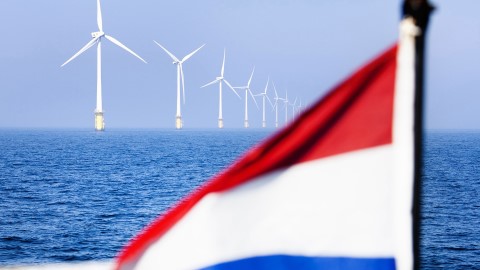To be sustainable, offshore wind power must be rolled out in harmony with nature and the environment. Critical biodiversity research, groundbreaking innovations and updates to wind turbines mean that sustainably generated electricity and a healthy ecosystem are becoming increasingly intertwined.
Biodiversity around wind farms
Vattenfall aims to make a net positive contribution to biodiversity by 2030. As part of our biodiversity policy for wind farm development, protecting nature and preserving biodiversity are linked to global climate targets and our ambition to make fossil-free living possible within a generation. This means that we include biodiversity aspects from the outset in our onshore and offshore wind projects and set high standards for biodiversity in tendering procedures. We are also involved in several long-term research projects that focus on the environment and biodiversity around wind farms.
“Vattenfall has assembled a dedicated team of specialists within the Environment & Sustainability department, including an Internal Life Sciences department with extensive R&D experience and sustainability experts who actively work with all our teams to be a sustainability leader”, says Dr Eva Philipp, Vattenfall’s Environment & Sustainability Director. “The team is highly active in biodiversity and ecology and participates in international environmental studies to understand the consequences of offshore and onshore wind power and how best to mitigate such consequences.”
Strengthening nature
To name one example, together with the nature conservation organisation De Rijke Noordzee, our teams launched a joint study at the Hollandse Kust Zuid wind farm to learn more about the opportunities for strengthening nature on wind farms. Whereas research has traditionally focused on strengthening the natural environment around turbines, we are also looking – for the first time – at how wind turbine designs can contribute to developing nature on wind farms. Openings are provided in the turbines’ foundations to allow fish and other marine life to move in and out of the turbines. The question now is whether the animals will use the turbines’ interior as a new habitat, to hide or to find food. The research will take place at the Hollandse Kust Zuid wind farm in collaboration with the Royal Netherlands Institute for Sea Research (NIOZ). In the coming years, a range of measurements will be taken in and around the turbines to see what progress has been made with biodiversity.
Protecting marine life
We are continuing on the same path in our plans for the new Hollandse Kust West VI wind farm. We will also take advantage of the latest technology, such as the use of vibration systems for fixed turbine foundations to minimise underwater noise, a range of innovations to reduce the number of birds and bats colliding with wind turbines, and the use of nature-inclusive designs for wind farms to protect and restore natural marine habitats. In addition, we are developing a comprehensive, multi-year ecological research programme to fill gaps in our knowledge on the impact of offshore wind power on marine ecology. With our knowledge and communications platform, we will share the data and insights gained from Hollandse Kust West lot VI, fund future ecological research at the wind farm, and introduce the wider public to offshore wind and marine ecology.
“Our proposal for the Hollandse Kust West wind farm is accompanied by groundbreaking innovations that promote natural biodiversity in the Dutch North Sea, combined with the sustainable development of offshore wind power in line with international climate goals. Through scientific research programmes, continuous biodiversity initiatives and measurements, we continue to work towards our goal of making a net positive contribution to biodiversity and showing whether – and how – nature and wind farms can coexist”, says Eva Philipp.
Hollandse Kust West
Vattenfall is taking part in the tender for the Hollandse Kust West wind farm and has signed up for both lots VI and VII, with BASF as its partner for lot VI. The Dutch government grants permits based on qualitative criteria, focusing on ecology and system integration.
The area where the Hollandse Kust West wind farm is to be erected lies around 53 kilometres off the Dutch coast. The entire area is being offered in two separate tenders (lots VI and VII). Each lot will deliver a minimum of 700 MW of offshore wind power capacity.
There are significant synergies with Vattenfall’s nearby Hollandse Kust Zuid wind farm. The Hollandse Kust West wind farm, which is first expected to generate power in 2026, fits perfectly into Vattenfall’s North Sea wind farm pipeline. It can therefore be seamlessly integrated into the current purchasing and execution strategy.
After this summer, the Dutch government is expected to make a decision on which bidder will be granted the permit for the Hollandse Kust West wind farm lots.


